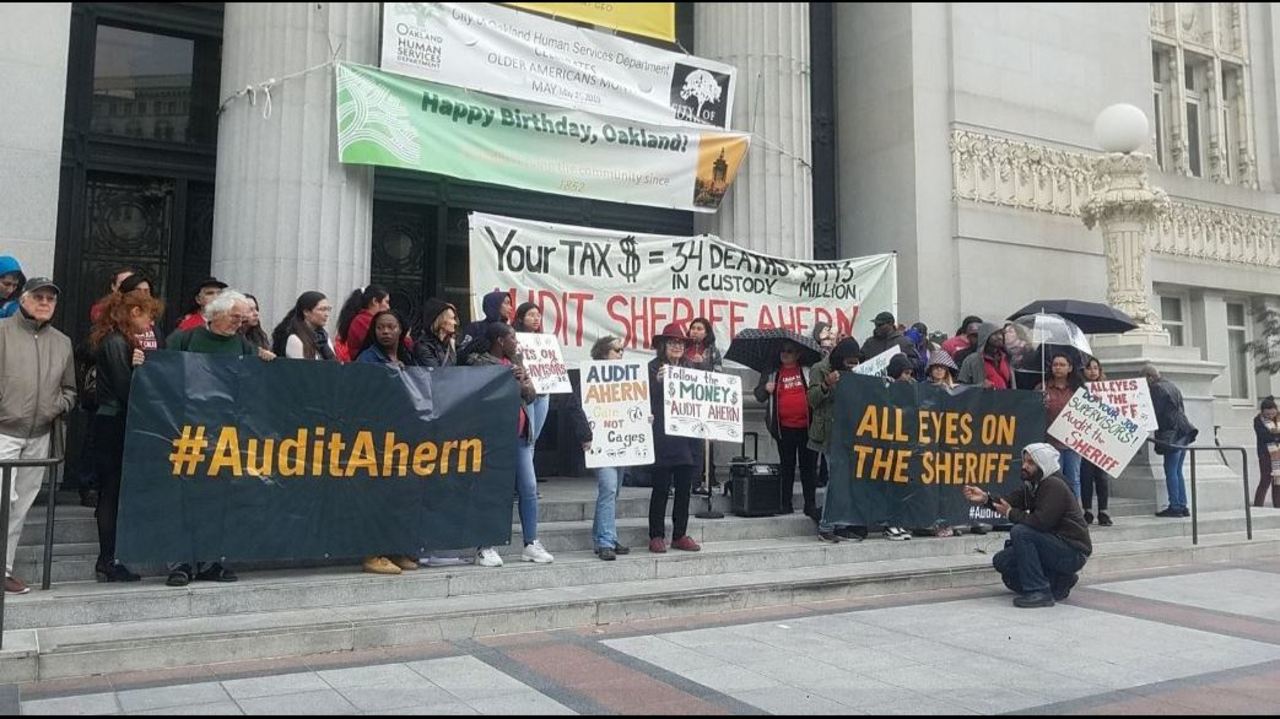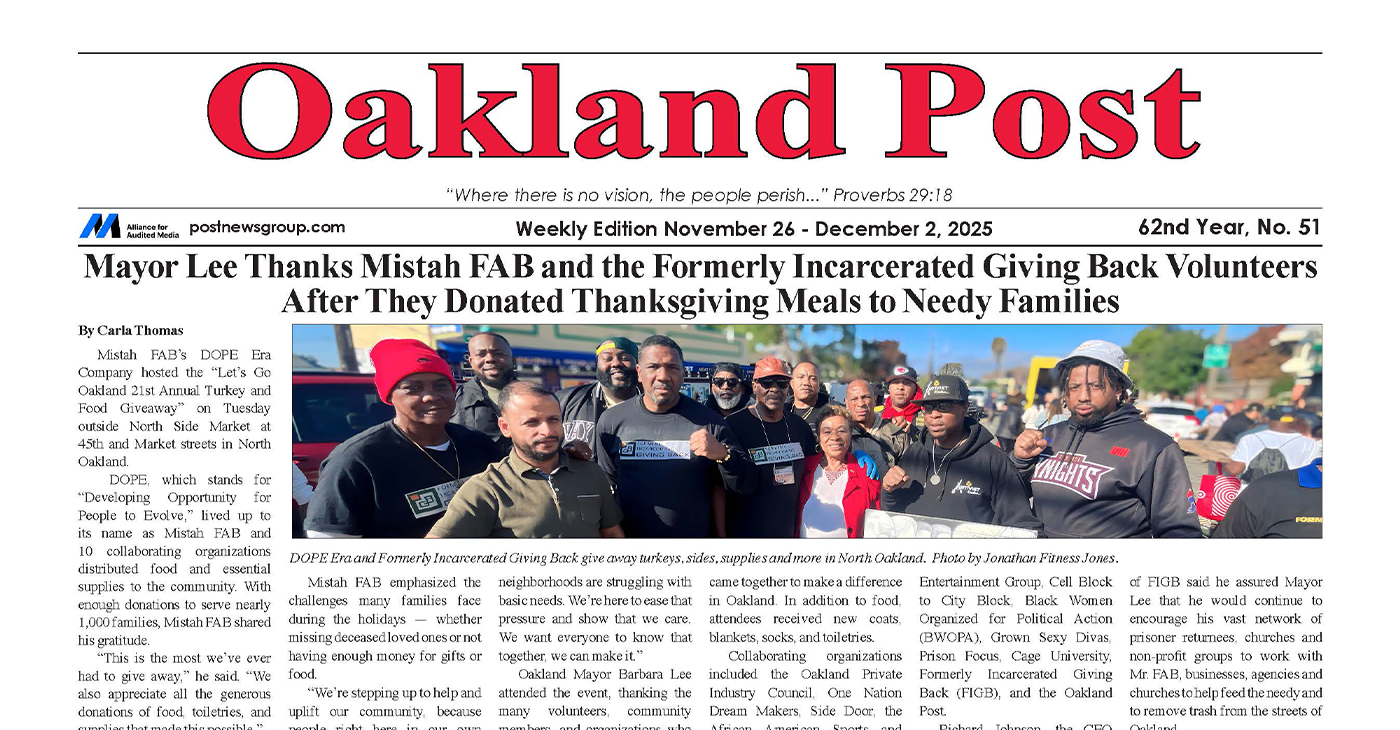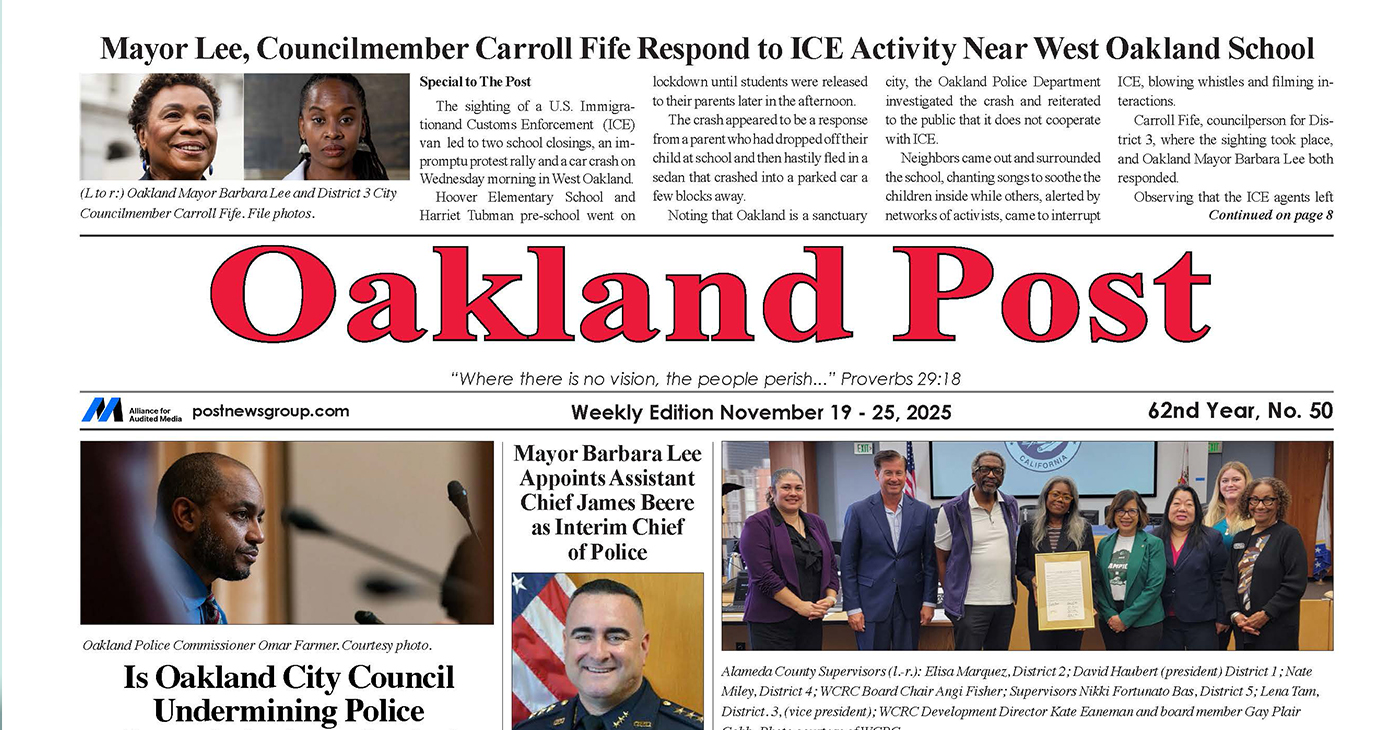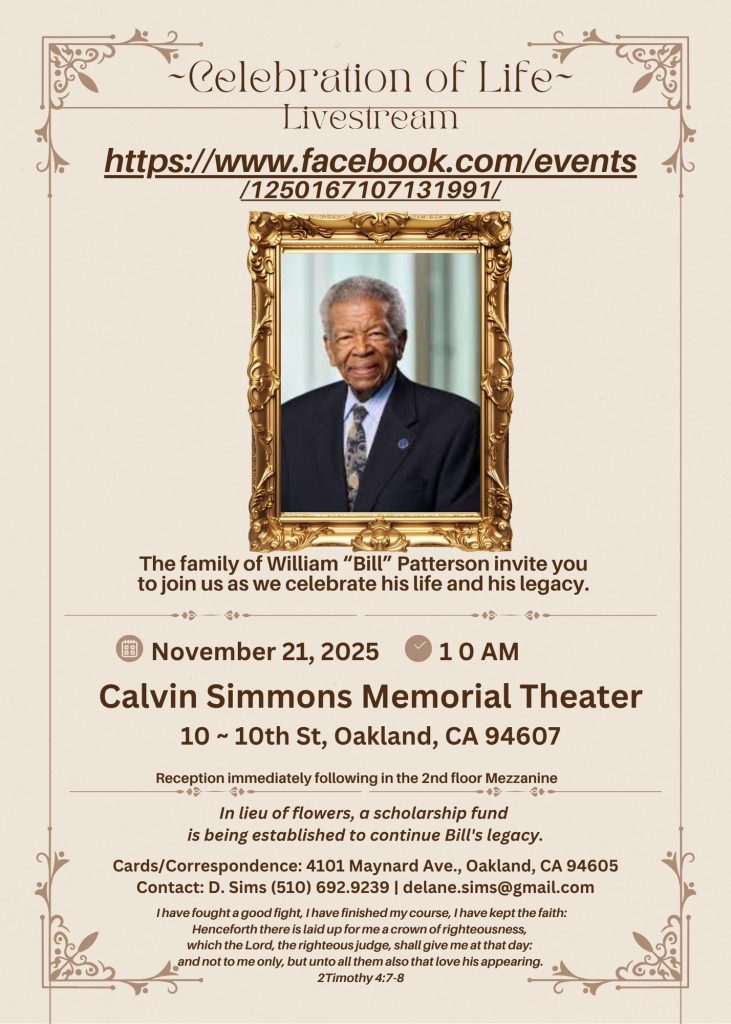Activism
Officials and Community Groups Call for Audit of County Sheriff’s Office

The Alameda County Sheriff’s Office and the County Board of Supervisors are facing a growing furor from Oakland residents and community groups demanding an independent audit of the Sheriff’s Office “in the spirit of justice, transparency and accountability.”
The coalition demanding the audit has gained momentum in the wake of reports of 33 in-custody deaths at the Alameda County jail since 2014, human rights abuses, violations of constitutional rights and “collusion with” with ICE to deport detainees, in violation of the state’s sanctuary law.
The Oakland City Council at its May 21 passed a nonbinding resolution calling on the Board of Supervisors to authorize the independent audit, which would examine both performance and financial issues. The resolution was authored by Councilmember Nikki Fortunato-Bas, backed by Mayor Libby Schaaf and Councilmember Dan Kalb.
Adding her voice to the public outcry, State Senator Nancy Skinner recently sent a letter to the Board of Supervisors President Richard Valle calling for the audit in response to the “troubling reports” released by organizations such as Ella Baker Center for Human rights.
In her letter, Skinner pointed out that the Sheriff Office’s budget has increased by $144 million over the past 10 years, reaching $443 million this year, even though the inmate population has decreased by half, as a result in changes in criminal justice legislation.
Speaking at the City Council’s Public Safety Committee meeting on May 14, Councilmember Fortunato-Bas said she authored the city resolution because “I was deeply concerned … when community groups and families shared their stories of human rights abuses right here in Alameda County.”
“We as a city can’t stand idle as our most vulnerable residents are cruelly and severely punished with a broken criminal justice system,” said Fortunato-Bas. At a time when the city is experiencing growth and development, it should be investing in schools, parks, infrastructure, public health and affordable housing and “not continue fueling the prison pipeline and mass incarceration,” she said.
Groups pushing for the audit include the Ella Baker Center, Causa Justa Just Cause, Oakland Community Organizations (OCO), the Unitarian Church of Oakland, American Friends Service Committee (AFSC) and the Justice. Reinvestment Coalition (JRC).
Cathy Leonard of the Coalition for Police Accountability told councilmembers that the Sheriff’s Office has “been colluding with ICE. They’re letting ICE know when people are being released from jail. That’s against the California sanctuary law.”
Jose Bernal, senior organizer at the Ella Baker Center, said: “We’ve been calling for an audit since November 2017. To most people this is common sense. This is transparency; this is accountability. This has somehow fallen on deaf ears (of) our county officials.”
Though the city resolution is nonbinding and symbolic, Bernal said, “This is a powerful…resolution. This tells the county, the state and the country where Oakland’s values are.”
The San Francisco Chronicle recently reported that a sergeant at the Sheriff’s Office illegally recorded a juvenile arrestee’s discussion with a lawyer.
Last June, “ two in-custody death occurred in Santa Rita (Jail) within the span of just three days,” according to a report submitted by Fortunato-Bas.
“Since 2014, 29 women have come forward with civil suits against (the Sheriff’s Office)…. (including) a pregnant mother who was forced to give birth alone in a dirty cell while guards ignored her screams,” the report said.
Further, according to the report, “In September 2017, four sheriff deputies were arrested on charges of allowing inmates to spray urine and feces on other prisoners at Santa Rita Jail,” citing an article in the East Bay Express.
Last October, the Board of Supervisors in October authorized an audit by the California State Association of Counties to examine the finances of the Sheriff’s Office.
Supervisor Valle said that after he sees the results of that audit, “then we’ll see if we need to get another audit,” according to a report in the Chronicle.
Sheriff’s spokesman Sgt. Ray Kelly told the Chronicle in an interview that an audit would show that the office is underfunded and understaffed.
“It’s expensive to do law enforcement in Alameda County,” he said, explaining that incarceration costs $75,000 a year per inmate.
The county books about 40,000 people a year in its jails and employs a staff of bout 1,600, including 1,000 deputies.
Activism
Oakland Post: Week of November 26 – December 2, 2025
The printed Weekly Edition of the Oakland Post: Week of November 26 – December 2, 2025

To enlarge your view of this issue, use the slider, magnifying glass icon or full page icon in the lower right corner of the browser window.
Activism
Oakland Post: Week of November 19 – 25, 2025
The printed Weekly Edition of the Oakland Post: Week of November 19 – 25, 2025

To enlarge your view of this issue, use the slider, magnifying glass icon or full page icon in the lower right corner of the browser window.
Activism
IN MEMORIAM: William ‘Bill’ Patterson, 94
Bill devoted his life to public service and education. In 1971, he became the founding director for the Peralta Community College Foundation, he also became an administrator for Oakland Parks and Recreation overseeing 23 recreation centers, the Oakland Zoo, Children’s Fairyland, Lake Merritt, and the Henry J. Kaiser Convention Center.

William “Bill” Patterson, 94, of Little Rock, Arkansas, passed away peacefully on October 21, 2025, at his home in Oakland, CA. He was born on May 19, 1931, to Marie Childress Patterson and William Benjamin Patterson in Little Rock, Arkansas. He graduated from Dunbar High School and traveled to Oakland, California, in 1948. William Patterson graduated from San Francisco State University, earning both graduate and undergraduate degrees. He married Euradell “Dell” Patterson in 1961. Bill lovingly took care of his wife, Dell, until she died in 2020.
Bill devoted his life to public service and education. In 1971, he became the founding director for the Peralta Community College Foundation, he also became an administrator for Oakland Parks and Recreation overseeing 23 recreation centers, the Oakland Zoo, Children’s Fairyland, Lake Merritt, and the Henry J. Kaiser Convention Center.
He served on the boards of Oakland’s Urban Strategies Council, the Oakland Public Ethics Commission, and the Oakland Workforce Development Board.
He was a three-term president of the Oakland branch of the NAACP.
Bill was initiated in the Gamma Alpha chapter of Kappa Alpha Psi Fraternity.
In 1997 Bill was appointed to the East Bay Utility District Board of Directors. William Patterson was the first African American Board President and served the board for 27 years.
Bill’s impact reached far beyond his various important and impactful positions.
Bill mentored politicians, athletes and young people. Among those he mentored and advised are legends Joe Morgan, Bill Russell, Frank Robinson, Curt Flood, and Lionel Wilson to name a few.
He is survived by his son, William David Patterson, and one sister, Sarah Ann Strickland, and a host of other family members and friends.
A celebration of life service will take place at Henry J. Kaiser Convention Center (Calvin Simmons Theater) on November 21, 2025, at 10 AM.
His services are being livestreamed at: https://www.facebook.com/events/1250167107131991/
In lieu of flowers, donations can be made to the Euradell and William Patterson scholarship fund TBA.

-

 Activism3 weeks ago
Activism3 weeks agoOakland Post: Week of November 12 – 18, 2025
-

 Activism4 weeks ago
Activism4 weeks agoOakland Post: Week of November 5 – 11, 2025
-

 Activism2 weeks ago
Activism2 weeks agoIN MEMORIAM: William ‘Bill’ Patterson, 94
-

 Activism3 weeks ago
Activism3 weeks agoHow Charles R. Drew University Navigated More Than $20 Million in Fed Cuts – Still Prioritizing Students and Community Health
-

 #NNPA BlackPress3 weeks ago
#NNPA BlackPress3 weeks agoThe Perfumed Hand of Hypocrisy: Trump Hosted Former Terror Suspect While America Condemns a Muslim Mayor
-

 Bay Area3 weeks ago
Bay Area3 weeks agoNo Justice in the Justice System
-

 #NNPA BlackPress3 weeks ago
#NNPA BlackPress3 weeks agoProtecting Pedophiles: The GOP’s Warped Crusade Against Its Own Lies
-

 #NNPA BlackPress2 weeks ago
#NNPA BlackPress2 weeks agoTrump’s Death Threat Rhetoric Sends Nation into Crisis


























































